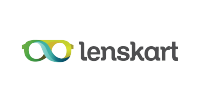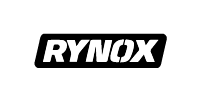6 min read |
Embedded insurance is a new and seamless way to distribute insurance services. It has the potential for insurers to create revenue streams and lower distribution costs by focusing on the mid-market. It benefits end-users too – individuals, families, firms; this type of protection is affordable and relevant at an appropriate time or place, thanks to modern ways that make it seem like they are part of people’s everyday life.
Automation and digitization, particularly in product underwriting and distribution, have rapidly increased embedded insurance.
The old maxim “insurance is sold, not bought” has passed because this age-old concept relies on outdated methods like door-to-door sales calls, which were the norm decades ago but just don’t work today.
In other words, in this day and time, an insurer with no physical presence near you or your prospective customer base can still have a shot at selling them their product or service if they know how to do things digitally right!
As per a report by InsTech London, the embedded insurance market is predicted to grow to $722bn in Gross Written Premium by 2030 – more than six times its current size. The major contributors to the growth will be China, India and North America, which together will account for over two-thirds of the global market by 2030.
Also, due to a considerable rise in online transactions across categories like payments, technology devices, medical, pharmacy, and vehicles, there is a significant push on creating sachet or micro-insurance products that could be embedded across these multiple categories.
Insurance coverages that could be embedded with bicycles, footwear, spectacles, cab rides, significant illnesses, COVID and many more have suddenly become commonplace. And such things did not even exist three years ago in India.
What is Embedded Insurance?
In simple words, it’s a form of protection or coverage that comes with purchasing a product or service.
The most prominent example happens at the point-of-sale when your bicycle company offers you cover against theft, damages to the bike and accessories and even a personal accident policy as a part of the package, or when you buy new shoes and are offered damage due to accidents like silencer burns, chemical spills, and breakage of buckle straps protections as part of the package deal.
Let’s see what Simon Torrance, one of the world’s leading experts on business model transformation, specializing in platform strategy, breakthrough innovation, and digital ventures, has to say about embedded insurance.
Embedded Insurance means abstracting insurance functionality into technology to enable any third-party product or service provider or developer in any sector to seamlessly integrate innovative insurance solutions into their customer propositions and experiences, either as complementary add-ons to their core offerings or as new native components.
Now let’s understand why the future of insurance is embedded.
Increasing customer demand
After COVID-19 many customers have moved to online platforms for their purchases, they enjoy the comfort and ease of buying products and services online. Similarly, customers enjoy the ease of purchasing insurance as an add-on to other investments. Embedded insurance fits here perfectly, and it offers relevant coverage just when customers are most likely to perceive its value.
Customer lifestyles have evolved too, where we are witnessing the rise of the sharing economy. We can see a massive change in commute patterns. Nowadays, few people own cars – especially in major cities – and consumers are turning to taxi aggregators like Ola and Uber, which embed insurance in terms of the hire. Similarly, scooter and bike rentals like Rapido have become popular and also come with embedded insurance.
Innovative Technology
We live in a digital age, and there is now an abundance of new digital platforms that can be easily integrated via APIs with distribution partners and third-party data sources.
These types of insurers provide appropriate and comprehensive protection plans to the customers for the products they are buying right at the point of purchase. Such insurers carefully craft coverage plans for the customers. Some of the big names, such as Symbo, Acko, Artivatic, Mantra Labs and many others, specialize in embedded insurance.
Stay updated with us
Distribution
As stated by the venture capital and private equity firm AlbionVC, “the largest tech ecosystems, such as Google, Amazon, Apple, and Alibaba, bringing together services, marketplaces and devices into one trusted experience, will be especially powerful in embedded insurance.“
The company continues that digital-first disruptors in an array of verticals are ideally placed to take control of this growing market: “if your digital business has control of the customer, the data, the trust and the communications, you are well-placed to embed insurance.“
InsTech London roughly agrees from the insurance industry’s perspective, saying that a great potential distribution partner has many customers, a trusted brand, and the ability and willingness to partner and share data.
The Future
Embedded insurance is becoming an essential part of the coming years. We have already witnessed how embedded insurance is a massive success for bicycles, footwear, spectacles, cab rides, major illnesses, COVID, disease due to mosquito bites, shared mobility business models, and many more while ensuring a transparent process for the end-user.
The potential for growth in areas like cyber insurance is also huge. For example, in cyber, the risks to business firms are rapidly rising, yet existing policies remain inflexible, difficult to comprehend, and potentially wrongly priced. Many small businesses remain underinsured and would hugely benefit from easy to purchase insurance with more flexible tailored pricing options.
While not every kind of insurance can be embedded right now, consumers’ growing demand for making several online purchases suggests that the market will surely evolve to cover even relatively complex specialty risks in the upcoming future.
Health, property, and casualty are some categories that could be easily embedded across various types. If insurers can efficiently exploit the protection gap then embedded insurance has the potential to create thousands of crores of value over the next three years in India alone.
A new recent study by PYMNTS states that 60% of buyers of life and health insurance policies insured through traditional providers would be ‘extremely’ interested in corresponding bank-embedded offers. Also, 49% of consumers during the study mentioned that they would be more interested in bank-embedded offers because of their ease and the trust of renowned entities.
With correct vision, and right strategy embedded insurance is a powerful tool for insurers and third parties to increase the penetration of the insurance sector in the unexploited Indian market, especially in rural and underserved areas
















